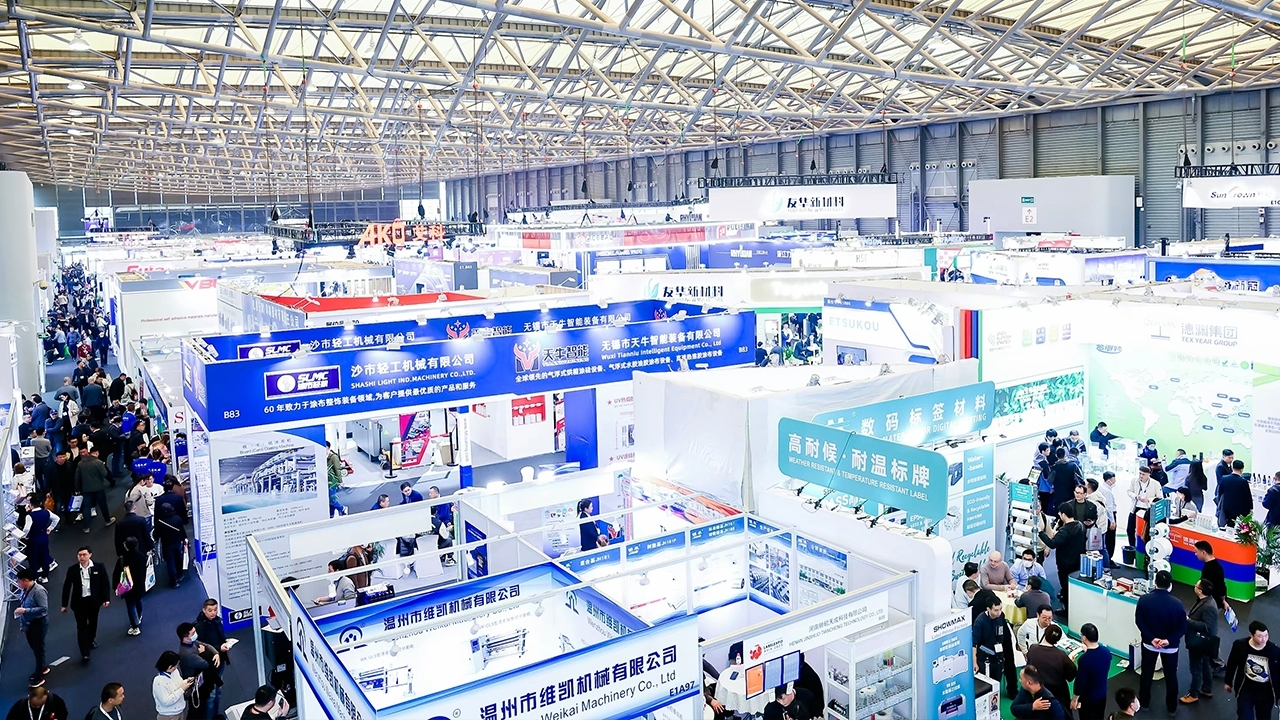The importance of share-worthy packaging
When it comes to product purchasing over the past 15 months, one of the effects of the pandemic is that e-commerce outpaced in-store shopping for the first time in history. This buying behavior forced brands to kick it up a notch (or lots of notches) when it comes to influencing the digital buying experience. The shopping and buying experience no longer ends at the un-boxing stage; for millions of consumers, the experience now includes sharing.

A key factor is for brands to understand the overlap between real life experiences and the virtual world – and that people want both. How can brands leverage that overlap? With their print and packaging
How do the things we see in Instagram stories or our Facebook feed end up online? What makes a consumer decide to share? And most relevant here, how can brands extend the consumer’s joy of product sharing with packaging that’s also ‘share-worthy?’
Let’s start with who is doing all this sharing, and let’s talk about your online activities. How many times a week do you typically post online? Take a minute to mentally add up your activity on LinkedIn, Facebook, Instagram, TikTok – whatever. Me? I post a story or article every day on LinkedIn, and a few times a week on the other platforms. So call it 15 posts a week.
Here’s the next question: how many posts do you actually read? Think about the past 24 hours; when you’re scrolling, what are you liking, sharing or clicking? I know it’s hard to track because we go through posts so quickly. For me, I’m going to guess I read about 50 posts a day.
Facebook users spend an average of 58 minutes per day on Facebook; Instagram users just slightly less, at 53 minutes. So I think it’s fair to say that we spend a pretty significant portion of our waking hours consuming content online. It’s not that any of us should be surprised by this. The Netflix documentary, The Social Dilemma, is all about our online lives, its impact on everything from what we buy to who we vote for, and forecasts about future media use. It must have resonated with us, because in September 2020, Social Dilemma was the first time a documentary took the top spot as the most popular movie on Netflix.
And while there have been decades of predictions about how we will consume digital content, not all of them have come true. One particular conversation comes to mind; it’s a comment made by the then CEO of Microsoft, Steve Ballmer, in 2008. Ballmer, who always speaks in very grand language and hyperbole, was being interviewed by The Washington Post. He said: ‘There will be no media consumption left in 10 years that is not delivered over an
IP network. There will be no newspapers, no magazines that are delivered in paper form. Everything gets delivered in an electronic form.’ As we all know, that prediction didn’t happen. Why?
What Ballmer and the tech world didn’t anticipate was how much we as humans crave the real world. While the ways in which we enjoy and participate in the virtual world certainly has grown rapidly over the past decade, we still want connection, touch, and face-to-face experiences. In fact, Instagram was created as a platform to share real world experiences in an online world. Ballmer didn’t anticipate that foundational human need to experience
things in the real world – like newspapers and magazines and all the print and packaging people like you and I create on a daily basis.
Social media is just one way we consume digital content. Also consider the rise of new(ish) media. For instance, the way that we watch TV. There are dozens of streaming platforms, and the content we choose to watch is heavily influenced by data analytics and computer technology. Nearly 80 percent of what we watch on Netflix is recommended to us based on our viewing habits. And consumers like that. It feels very personal. We feel ‘known’ even
though it’s done by an algorithm.
Technology has blurred the boundaries between the virtual world and the real world. It didn’t eliminate one, as Ballmer predicted; it’s not a zero-sum game of one or the other. It’s created a sense of overlap between the virtual and the real world.
I don’t know that anybody truly anticipated our level of participation in these digital platforms, and the way in which we participate with different products, with different brands, with different events every day. What’s driving all that participation? It’s because any of us can create content – pictures, stories, videos, animation – and anyone can share an experience.
Print and packaging live in the real world
Brands that embrace that level of participation and recognize how valuable it is will gain a real competitive advantage. A key factor is for brands to understand the overlap between real life experiences and the virtual world – and that people want both. How can brands leverage that overlap? With their print and packaging. Print and packaging, of course, are of the real world, and yet they are shared millions of times a day in the virtual world. And not just by influencers, bloggers and celebrities, but also by everyday consumers. That’s why packaging is so crucial for brands; it can easily become a secondary reason – or even the primary reason! – that consumers are excited to share their IRL (In Real Life) experiences with their online friends and followers.
When you take a look at how our online participation has evolved, there does not appear to be an end in sight. Facebook has grown to 2.7 billion users. Instagram has about half that. And TikTok has nearly doubled during the pandemic, to 689 million users. If you aggregate all that, we’re looking at billions of people posting on a regular basis.
One of the biggest changes from a brand perspective is that brands are no longer the ones creating the most trusted content; the influence is coming from user-generated content. If I post about a product I love, no one’s asking me to post it. No one’s paying me to post it. I’m posting it on my own because I feel like sharing something that I’m excited about. And because social media is so visual, when someone shares their latest product find or raves
about a brand, the post is usually accompanied by an image or video. And what’s front-and-center in that photo or video? The
packaging.
People aren’t just holding up the sweater they bought or their favorite protein bar or their new pair of sneakers; they’re recording and sharing the entire un-boxing experience. They are literally talking about the packaging! That’s why packaging can no longer be just about keeping the product safe during transport or protected from the elements; packaging is a valuable piece of the brand story and consumer experience.
In addition to creating packaging that aligns with a brand’s messaging and quality, now we must design packaging that’s share-worthy
Designed for sharing
Digital printing has elevated the consumer experience with customization and personalization. Scroll through Instagram or Facebook right now and you’ll see videos of people clapping, jumping up and down, or squealing with excitement when they receive a package that’s personalized with their name on the outside or a note on the inside or free samples included, based on their previous purchases. That’s a pivotal moment when consumers feel as if the brand is engaging with them on a personal level. It’s an experience far beyond simply plucking a packaged product from the shelf.
What does all this mean to marketers, brand owners and designers? As a designer myself, I’ll tell you: the goal has grown. In addition to creating packaging that aligns with a brand’s messaging and quality, now we must design packaging that’s share-worthy. It’s a goal that can impact the bottom line: sharing products (and packaging) online is really one more way of posting a product review or endorsement.
And when it comes to building brand trust, consumer reviews are the number-one influencer. Brand trust, in turn, builds consumer loyalty and sways buying decisions.
In that context, it’s easy to see how important packaging design is to share-worthiness. The enhancements brands use may be the very things that encourage someone to share. In fact, for some products, people talk about the packaging as much or more than the product.
Consider the boxes that Apple products come in. Recently, thousands of people who called themselves ‘collectors’ posted their stacks of spot-varnish, high-gloss white iPhone and MacBook boxes. You can find the same obsession with the iconic orange boxes of the Hermes brand. And the piles of Nike boxes that sneakerheads hoard. Consider the Boomerang images of people opening and closing a magnetic box because they love the feel and sound of it. These strategic designs are exactly the reason why packaging takes center stage in user-generated content and product posts. It creates another touchpoint for brands to connect with their consumers in real life and in the virtual world. A tactile, memorable, share-worthy touchpoint at that.
What’s next? In part two of this series, I’ll cover in-depth my three strategies for designing share-worthy packaging: 1) Align online. Align the design and packaging you’re creating in the real world to ensure it works really well in an online environment. 2) Create packaging elements that are interactive or hands-on, so the un-boxing experience is not only exciting for the consumer to share, it’s exciting for the viewer to watch. 3) Create customization.
Whether you customize the outside package, the product’s case or the materials inside, consumers love to feel known, seen and supported by brands.
Stay up to date
Subscribe to the free Label News newsletter and receive the latest content every week. We'll never share your email address.


